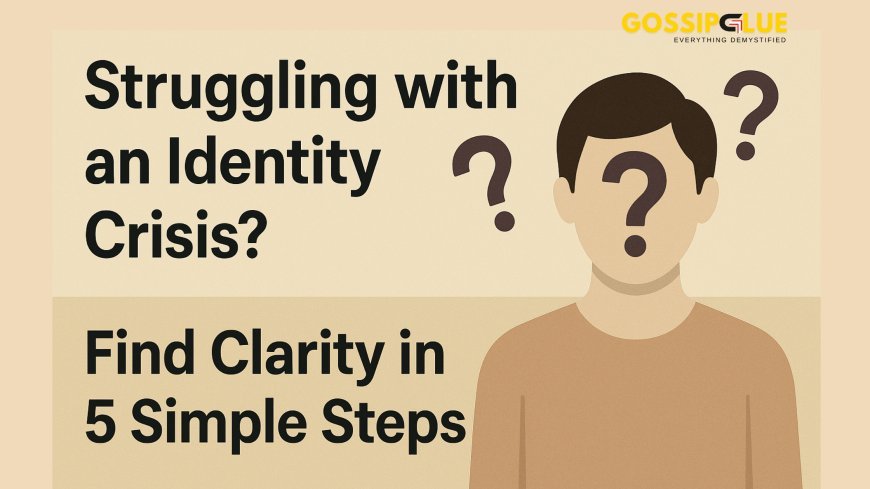Identity Confusion in the Age of Digital Avatars and AI
Discover how digital avatars and AI impact your sense of identity, offering practical tips for self-discovery, crisis management, and authentic personal growth.

Introduction: Embracing the Digital Mirror
Have you ever logged into a virtual world, tweaked your avatar until it smiled just right, and paused wondering if that pixel-perfect face was more you than your own? In todays IT-driven landscape, the line between our online personas and our real-world selves can feel as thin as a screen. As someone whos spent late nights debugging code and customizing digital characters alike, Ive found myself wrestling with a subtle but persistent loss of identity. Join me as we explore how digital avatars and AI are reshaping identity development, and more importantly how you can maintain a grounded sense of identity while embracing this brave new world.
The Rise of Digital Avatars and the Modern Self
Twenty years ago, our online profiles were simple: a static photo, a few bullet points about hobbies. Fast-forward to today, and AI-driven platforms let us craft entirely new personal identity landscapes. Whether youre designing a hyper-realistic avatar for a metaverse meeting or leaning on an AI assistant to draft your rsum, these tools promise convenience and also lure us into endless self discovery loops. I remember my first VR conference: I spent an embarrassing fifteen minutes perfecting my avatars eye color. In hindsight, that was more than vanity it was me testing boundaries of finding yourself in code.
When Avatars Blur the Line: Understanding Identity Confusion
At their best, avatars are playful extensions of who we are. But when that replay button for our digital selves starts to override the real thing, identity confusion can set in. You might catch yourself thinking, Am I the person who aced yesterdays presentation, or the sleek avatar who did it in VR? This split can trigger a mini crisis management scenario in your mind. On one hand, your AI-driven rsum builder tells a flawless story. On the other, late-night self-reflection reveals gaps in your identity development like the skills youve yet to practice in real life.
Tools for Self-Discovery in the Digital Realm
Thankfully, the same technologies that muddy our self-perception can also guide Self-discovery if we use them wisely:
- Digital Journals with AI Prompts
Tools like AI journaling apps ask nuanced questions: What part of your avatar resonates with your core values? Answering these can restore clarity to your sense of identity. - Skill-Building Platforms with Real-Time Feedback
Services such as interactive coding sandboxes offer tangible progress markers. Seeing your real skills grow alongside your digital credentials keeps your personal identity rooted in genuine achievement. - Virtual Mentorship Communities
In forums where seasoned IT pros share war stories both virtual and physical you can compare notes on finding yourself beyond the avatar. These shared narratives help you separate the highlights reel from the behind-the-scenes reality.
Crisis Management for Your Personal Identity
When the line blurs, a few simple strategies can anchor you:
- Scheduled Offline Check-Ins
Set aside non-negotiable downtime each week no screens, no avatars. Use that time for analog hobbies: a walk, sketching, or tinkering with hardware. This analog space becomes a refuge for genuine self-reflection. - Peer Accountability Partners
Buddy up with a colleague who understands both your codebase and your inner quest. Share vulnerabilities about identity confusion, and hold each other accountable for real-world goals like building a personal project from scratch. - Reflective Milestones
At the end of each sprint or project, ask yourself: What did I learn about myself, not just my avatar? Logging these reflections turns transient achievements into meaningful identity development moments.
Conclusion: Charting Your Own Path
Navigating the interplay between digital avatars, AI, and your authentic self isnt about rejecting technology its about using it intentionally. By weaving in analog habits, leveraging AI-powered self-discovery tools, and embracing candid conversations with peers, you can transform potential loss of identity into an opportunity for deeper growth. So next time you tweak that avatars hairstyle, pause and ask: Does this choice reflect who I truly am or who Im still becoming? In doing so, youll turn every virtual milestone into a stepping-stone toward a stronger, more resilient sense of identity.
























